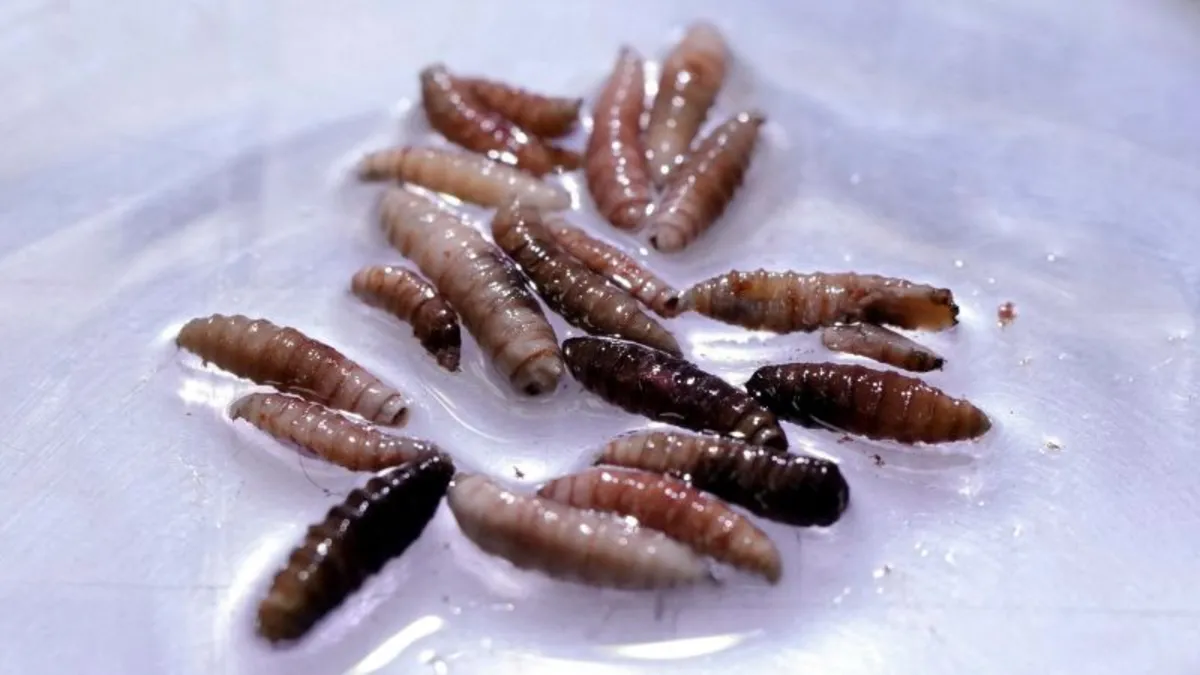
A rare case of travel-related New World screwworm was confirmed in Maryland, involving a patient who recently traveled from El Salvador. This information was shared by a spokesperson from the US Department of Health and Human Services (HHS). The US Centers for Disease Control and Prevention (CDC) and the Maryland Department of Health are currently investigating this case of the flesh-eating parasite, which was confirmed on August 4, according to HHS spokesperson Andrew Nixon.
Nixon stated in an email, “This is the first human case of travel-associated New World screwworm myiasis (a parasitic infestation of fly larvae) from an outbreak-affected country identified in the United States.” Fortunately, he noted that “the risk to public health in the United States from this introduction is very low.”
A representative from the Maryland Department of Health indicated that the Maryland resident has successfully recovered from the infection, adding that “there is no indication of transmission to any other individuals or animals.” This is a reassuring update in light of the concerns surrounding the New World screwworm.
The outbreak of New World screwworms—the larval form of a fly known for nesting in the wounds of warm-blooded animals—has been escalating across Central America since early 2023. Infestations have been reported in countries including Belize, Costa Rica, El Salvador, Guatemala, Honduras, Mexico, Nicaragua, and Panama. Alarmingly, the fly reached southern Mexico late last year, prompting concerns among US agricultural officials and resulting in the closure of border-area trading ports for cattle, horses, and bison this year.
The New World screwworm poses a significant threat to animal populations and the food supply, leading to heightened awareness and preventive measures in the United States.
Historically, the United States successfully eradicated New World screwworm populations in the 1960s and 1970s by breeding sterilized males and dispersing them from planes to mate with wild females. This month, the US Department of Agriculture (USDA) announced plans to construct a fly production facility at Moore Air Force Base in Edinburg, Texas, capable of producing up to 300 million sterile flies weekly. The USDA is collaborating with facilities in Panama and Mexico to enhance these efforts.
USDA Secretary Brooke Rollins emphasized, “The construction of a domestic sterile fly production facility will ensure the United States continues to lead the way in combating this devastating pest. If our ranchers are overrun by foreign pests, then we cannot feed ourselves.”
Additionally, the USDA plans to allocate up to $100 million for new technologies, including traps, lures, therapeutics, and techniques to bolster fly production. The agency will also employ mounted patrol officers, known as “Tick Riders,” for surveillance and train detection dogs to identify outbreaks among livestock.
This month, HHS issued an emergency declaration to facilitate more flexible use of animal drugs by the US Food and Drug Administration (FDA) for treating and preventing New World screwworm infestations. Although there are currently no FDA-approved drugs for this parasite in the United States, this declaration allows for emergency authorizations of medications.
New World screwworms are the parasitic larvae of a metallic blue blow fly species known as Cochliomyia hominivorax. Unlike other blow flies native to the Western Hemisphere, the New World screwworm feeds on the living flesh of warm-blooded animals, including horses, cows, pets, and even humans. Dr. Phillip Kaufman, head of the entomology department at Texas A&M University, explained the reproductive process of the fly: “After mating, the female fly finds a living host, lands on its wound, and will lay up to 200 to 300 eggs.”
These eggs hatch within 12 to 24 hours, leading the larvae to burrow into the tissue of the host animal, resulting in significant wounds. Treatment for infested cattle often involves cleaning, antiseptic treatment, and wound coverings. If untreated, these flies can lead to the death of an animal within one to two weeks and can spread to others.
Dr. Daniel Griffin, an infectious disease specialist at Columbia University, highlighted the danger: “These flies will land on an animal that has even just a small scratch, just a small break in the skin, to lay the eggs. When the eggs hatch, the maggots will burrow in, and they will very quickly turn living tissue into Swiss cheese.”